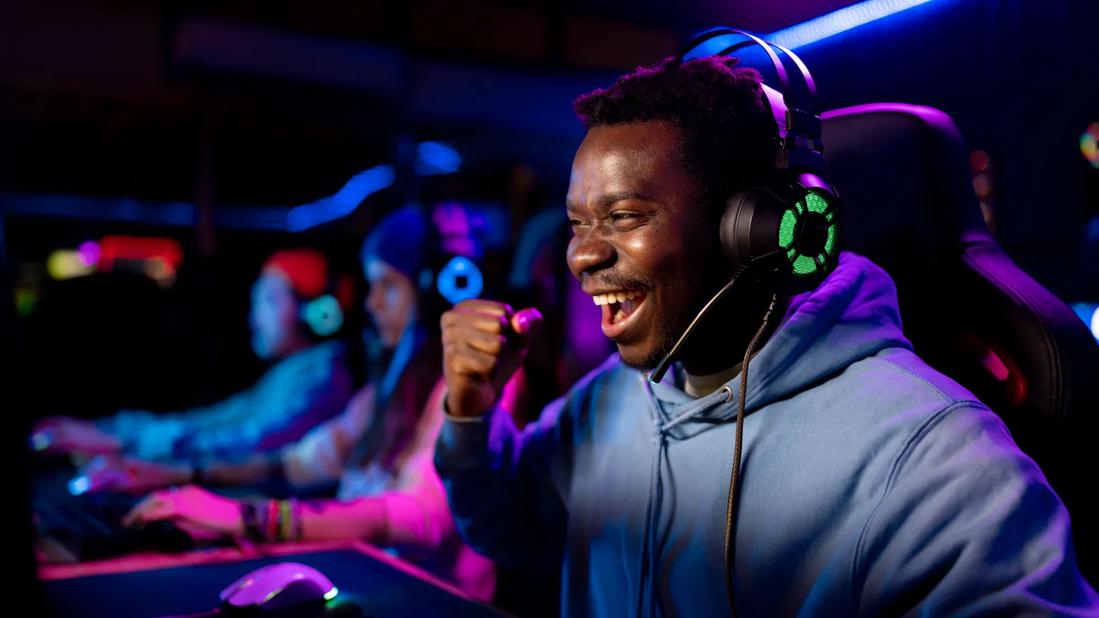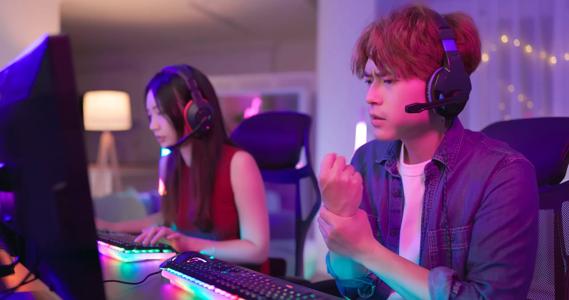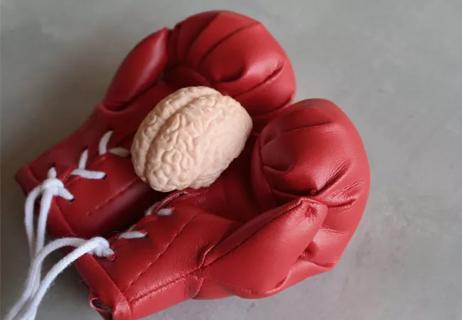Gamers are athletes who can benefit from athletic training

They may not be running at top speed or putting a ball in a goal, but esports athletes do have increased cardiovascular and caloric output while performing in a game, says athletic trainer Jason Cruickshank, an esports neurocognitive, strength and conditioning specialist at Cleveland Clinic.
Advertisement
Cleveland Clinic is a non-profit academic medical center. Advertising on our site helps support our mission. We do not endorse non-Cleveland Clinic products or services. Policy
Competitive video gamers make up esports teams from youth to professional levels. North America has more than 250 collegiate esports programs, according to the National Association of Collegiate Esports. These college athletes can earn scholarships like traditional college athletes, but instead of basketball and football, their games have names like Rocket League and Overwatch.
“Collegiate programs are growing especially fast. More spectators are watching gaming competitions online, helping to grow fan bases for college athletic programs,” says Cruickshank. “Just like all college athletes, esports athletes spend hours a day working to maximize their performance in competition.”
That can lead to musculoskeletal complaints, fatigue and stress, he says. Esports athletes often need sports medicine professionals to support them with strength training, conditioning and injury-prevention strategies so they can perform at a higher level.
“These are athletes, and we should be approaching them with the same level of health, wellness and performance-improving care that we offer traditional athletes,” says Dominic King, DO, Director of the Esports Medicine Program at Cleveland Clinic.
But not everyone views esports this way. Below, Dr. King and Cruickshank respond to the five esports myths they hear most often.
Dr. King: There are six reasons that esports athletes are real athletes.
Advertisement
Cruickshank: Total rest is usually not ideal for elite athletes of any type, as time away from their sport and its conditioning sacrifices performance. When tissues are resting to take time to feel better, they also are shortening, tightening and weakening. In sports medicine, we instead focus on active recovery with stretching, strengthening and movement at a low level of intensity to prime the athlete to return to play.
In esports, repetitive use injuries are most common. They are usually due to improper body alignment or positioning, where one side is stretched out and inactive while the other is shortened and overactive. That is where we come in, to manage that workload better. We usually start with stretching and stabilization activities that allow the tissue strain to relax while improving the athlete’s function, flexibility and mobility.
The same concepts can work for neurocognitive conditions. We want to keep the athlete’s neurocognitive and psychomotor skills activated, just at a decreased level, with a focus on improving strength, endurance and stabilization to help the injury heal.
Dr. King: Just as inactivity can’t build strength, it can’t fully restore it either. True recovery for these athletes comes from a balanced regimen of active recovery, nutrition and mental health practices. Our Gamer’s Health Guide summarizes guidance on gaming ergonomics; stability, mobility and posture for gamers; cardiorespiratory fitness; nutrition and mental health.
Dr. King: Saying esports athletes don’t need training is like claiming race car drivers don’t need conditioning to manage the intense demands of high-speed driving. Esports athletes require rigorous training to enhance their physical and mental performance, particularly in hand-eye coordination, fine motor skills, reaction time and precision.
Advertisement
In addition, all athletes need training to use their sports equipment correctly, whether they use a bat and ball or a controller and headset.
Cruickshank: An athletic trainer (AT) may not need to be present every day with an esports team like they are for teams that play contact sports, but injuries do occur during esports practice and competition. That’s when an AT is needed to help evaluate and rehabilitate the athlete to get them back in the game.
Also, neurocognitive function is paramount for esports athletes. The best way to improve it is with physical activity. ATs can help direct exercises that increase blood flow to the brain, provide recovery from eye and mental fatigue, and prepare tissues for the load of practice and competition.
Dr. King: The best athletes in any sport are those who learn how to hone their mental skills as well as physical skills. Esports athletes are experts at this. That’s why at Cleveland Clinic we refer to esports athletes as “neurocognitive athletes.”
Traditional athletes can enhance their performance on the field or in the arena by learning how esports athletes develop quick reflexes and mental agility through gaming. There are many instances of professional baseball and football players and race car drivers using gaming to improve their neurocognitive abilities
Cruickshank: At Cleveland Clinic, we’ve developed a web-based tablet application that screens for concussion in high school and college athletes. It involves various challenges to assess psychomotor processing and reaction time. When we conduct baseline testing, our esports athletes perform significantly better than traditional athletes when matched for age and sex. It’s interesting to see how much faster and more fluid their mental processing is.
Advertisement
Cruickshank: My son is a cross-country runner but also participates in online gaming. It’s his social outlet. After finishing homework and sports practice, he convenes with his friends online to play games — just like going out to play in the backyard.
During and after the pandemic, kids needed new ways to connect with others and socialize. The virtual gaming environment offered that and continues to offer it as much as in-person environments.
Dr. King: Traditional sports provide cardiovascular fitness, physical strength and other health benefits, while esports tends to offer more mental health benefits. Systematic reviews and meta-analyses have demonstrated that gaming can reduce psychological and physiological stress, often through camaraderie and teamwork. For instance, one review found that gaming interventions can be effective in treating depression among young people. Additionally, training older adults with video games has been shown to enhance cognition. Furthermore, there is potential for video games to improve health outcomes in psychological and physical therapy.
Some people ask why we let kids play video games when they should be actively playing outside. But in 2024, a healthy understanding of all the ways that youth and athletes engage with each other includes both the outdoor physical environment and indoor virtual environment.
Advertisement
Advertisement

Cleveland Clinic’s Esports Medicine team weighs in on importance of multidisciplinary care

Not enough evidence to link screen time to attentional disorders, but there is still cause for concern

Clinical complexity demands personalized care strategies

Research by Cleveland Clinic and Sports Data Labs to improve health and function in everyday patients as well as elite athletes

A behind-the-scenes look at Cleveland Clinic’s role as medical services provider of the 2023 Summer Series

Rest is often not the best care for gamers’ overuse injuries

Criteria-based diagnosis of traumatic encephalopathy syndrome predicts changes in brain volumes and cognition

Multidisciplinary care can make arthroplasty a safe option even for patients with low ejection fraction